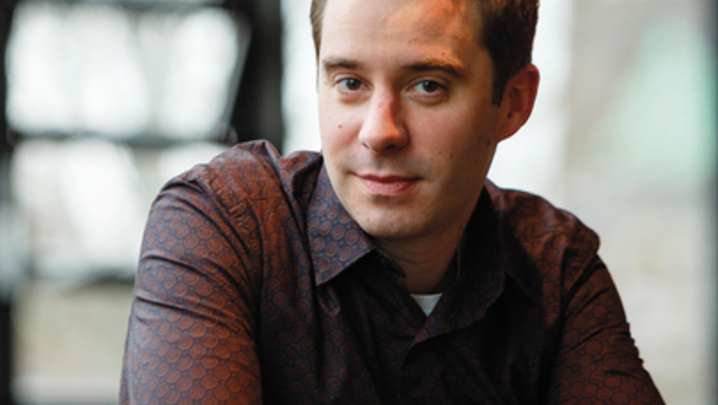Charlie Beckett says broadcasters have to learn from social media or risk losing their pre-eminence in the political narrative
At 10:00pm on 8 June, I was in a studio watching a live election-night show produced by two media companies that are going to be a big part of the future of political broadcasting. Neither of them were TV brands.
As the shock exit poll result came out, the two presenters, with a combined age about half that of David Dimbleby, reacted with squeals of surprise. This was all very un-Reithian.
BuzzFeed’s political team had moved into Facebook’s Euston headquarters to create their own election-night live feed of commentary and results headed by their admirable political editor, Jim Waterson. He was sitting in front of a pink coffee table with a multicoloured hardboard cut-out set.
It was all a little chaotic and didn’t deliver the heavyweight insights of the big broadcasting beasts. But, for a certain demographic, it was lively, engaging and accurate.
The BuzzFeed/Facebook show was something of an experiment but, as we look back at the end of “strong and stable”, it is just one sign that election television is on the cusp of change, too.
We have been told that this was the election when the power of the newspapers ended. Social media, not print, is now the kingmaker. It is not quite that simple. While Jeremy Corbyn’s online campaign may have fuelled his late surge, it was also the right-wing newspapers turning on Theresa May over the so-called dementia tax that started her slide.
Certainly, though, the papers seemed less able to dictate the agenda. Their late assault on Corbyn, for example, felt patronising and was much rebuffed on social media.
"Labour grew to welcome the attention of the broadcasters because they were not as relentlessly hostile as the right-wing newspapers."
Yet, as digital natives such as BuzzFeed and social networks like Facebook grow in influence, is the bigger story one in which broadcasting is also losing its political pre-eminence?
Voters tell researchers that they get most of their information about politics from TV news. In an age of presidential-style politics, the power of the image is persuasive. That didn’t change in 2017. But its impact was diluted.
In 2010, the novelty of the TV debates meant that, in a short campaign, they threatened to take over the election agenda. The drama of Nick Clegg popping up between Gordon Brown and David Cameron filled the bulletins and attracted big audiences.
In 2015, the set-piece programmes were less dominant but, as part of the overall on-screen campaign, they helped ensure that broadcast was the most important medium.
While Cameron avoided direct debate, the leaders of the minor parties, such as Nicola Sturgeon and Nigel Farage, added fresh characters to the political drama of what we (mistakenly) thought was a close race.
But, in 2017, television election coverage was emasculated.
This was the most stage-managed campaign ever. May refused to engage in open public debate with journalists, the public or rival politicians. Her appearances were confined to warehouses or factories filled with party supporters.
Journalists complained that, even when they were allowed to ask a question, they were prevented from follow-ups by aides who kept hold of the microphone. Other ministers, including key figures such as the Chancellor, Philip Hammond, barely made it on air.
Labour grew to welcome the attention of the broadcasters because they were not as relentlessly hostile as the right-wing newspapers.
But the party also stage-managed Corbyn’s appearances. It kept taking its leader to safe seats to speak before invited party members, while the right-wing press was excluded.
The TV set-piece programmes were largely incident-free. Perhaps the only thing you might recall is Ukip leader Paul Nuttall getting Leanne “Natalie” Wood’s name wrong.
In itself, the flatness of the broadcast election was not everything. Election broadcasting is about more than catching out politicians or filming a fist fight. It is about allowing the public to hear and see democracy being done.
"It became routine for social-media critics to describe the BBC’s coverage as “fake”."
TV is supposed to give a voice to a range of parties and policies that are out of sight the rest of the time and to show what kinds of leadership character are on offer.
Broadcast journalists took to Twitter to rage at the failure of the leaders to engage. The BBC’s Jeremy Vine pointed out that it was the first time in 40 years that the Prime Minister had not appeared on Radio 2’s flagship show.
But no one was able or prepared to protest at this empty theatre of news. No one pulled the plug on those preposterous photo opportunities. What could the broadcasters do? Go on strike?
Of course, UK broadcasters are regulated for impartiality, especially at elections. They have a duty to cover even the most tedious of contests in detail. They can’t imitate the US cable news networks, who turn electoral politics into soap opera and high drama by injecting a huge dose of bias and exaggeration.
Social media suffers from no such restriction. The role of Labour’s supporters on social media and the extraordinary success of several “alt-left” news sites, such as The Canary, was the most intriguing media story of this campaign.
Hugely partisan, highly active and very effective in terms of online impact, these helped to mobilise Corbyn’s support. They also took on “mainstream media” but not just the newspapers. They turned on the broadcasters and, especially, the BBC.
This was manifested in its most ugly form in appalling, misogynistic and violent personal abuse against BBC political editor Laura Kuenssberg. The accusations of BBC bias came especially from the highly active digital Corbynite left, although Brexiteers and Scottish Nationalists also chimed in.
A lot of this was the usual “why are you not reporting this from my point of view?”. In a mirror image of President Trump, it became routine for social-media critics to describe the BBC’s coverage as “fake”.
Sometimes, they may have had a point. For example, was it really the job of BBC political correspondents to routinely undermine Corbyn by referring to his unelectability whenever referring to Labour policy proposals?
As the final result showed, perhaps he was more electable than conventional wisdom thought. At least the BBC was talking about his policies.
Cardiff University’s Stephen Cushion’s research has shown that the BBC gave more airtime proportionately to Labour’s manifesto promises than any other broadcaster.
In a world where TV is still the main source of information for voters at election time, that matters. Members of the Labour Party’s campaign team were clever enough to realise it. As their party’s fortunes improved and a destabilised May hid from the limelight, they decided to put Corbyn forward more, including at the BBC-hosted encounter where Amber Rudd replaced the PM.
Who “won” that encounter mattered much less than the fact that May was seen to be absent and Corbyn was seen to be a lot less scary than the press had warned. The BBC was simultaneously being pilloried by Corbyn supporters, while lending their man’s campaign a lift. That’s BBC balance for you.
The usual newspaper criticism and competition is now compounded by a social-media sphere whose attacks usually have more to do with rallying troops than fighting for truth.
There was a lot of great TV in the 2017 general election. A few highlights for me include: the BBC’s Andrew Neil; ITV’s Tom Bradby on election night; and Sophy Ridge’s bright evening show on Sky. But talent, balance and high production values are not enough.
The broadcasters need to continue the bridge-building with the more grown-up new kids on the digital block, such as the BBC’s tie-up with Twitter. There is much that the broadcasters can and are doing to use social media to make their political coverage reach further and engage more deeply.
As the spin increases, it might be the only way to make broadcast election campaigns less of a two-dimensional experience.
A former TV journalist, Professor Charlie Beckett is director of Polis, the journalism think tank at the LSE.



